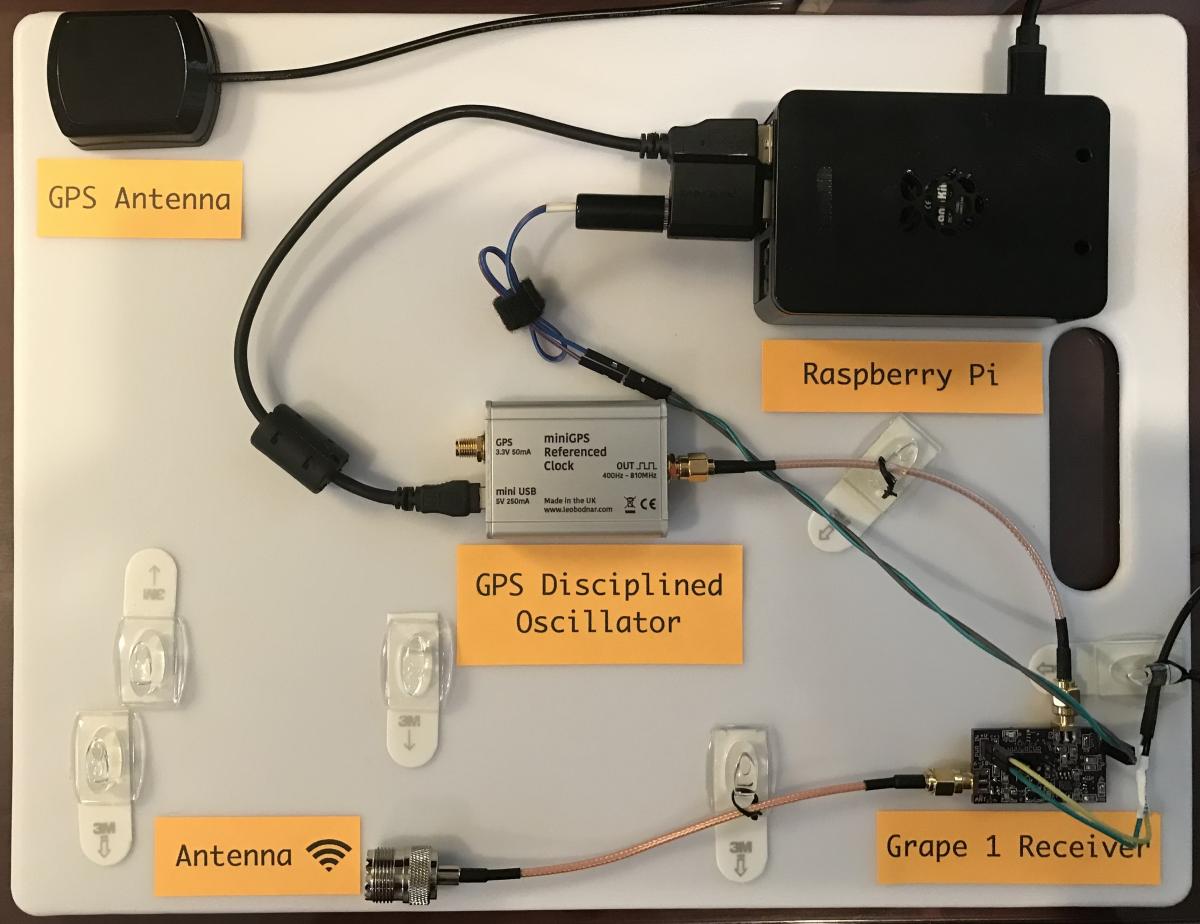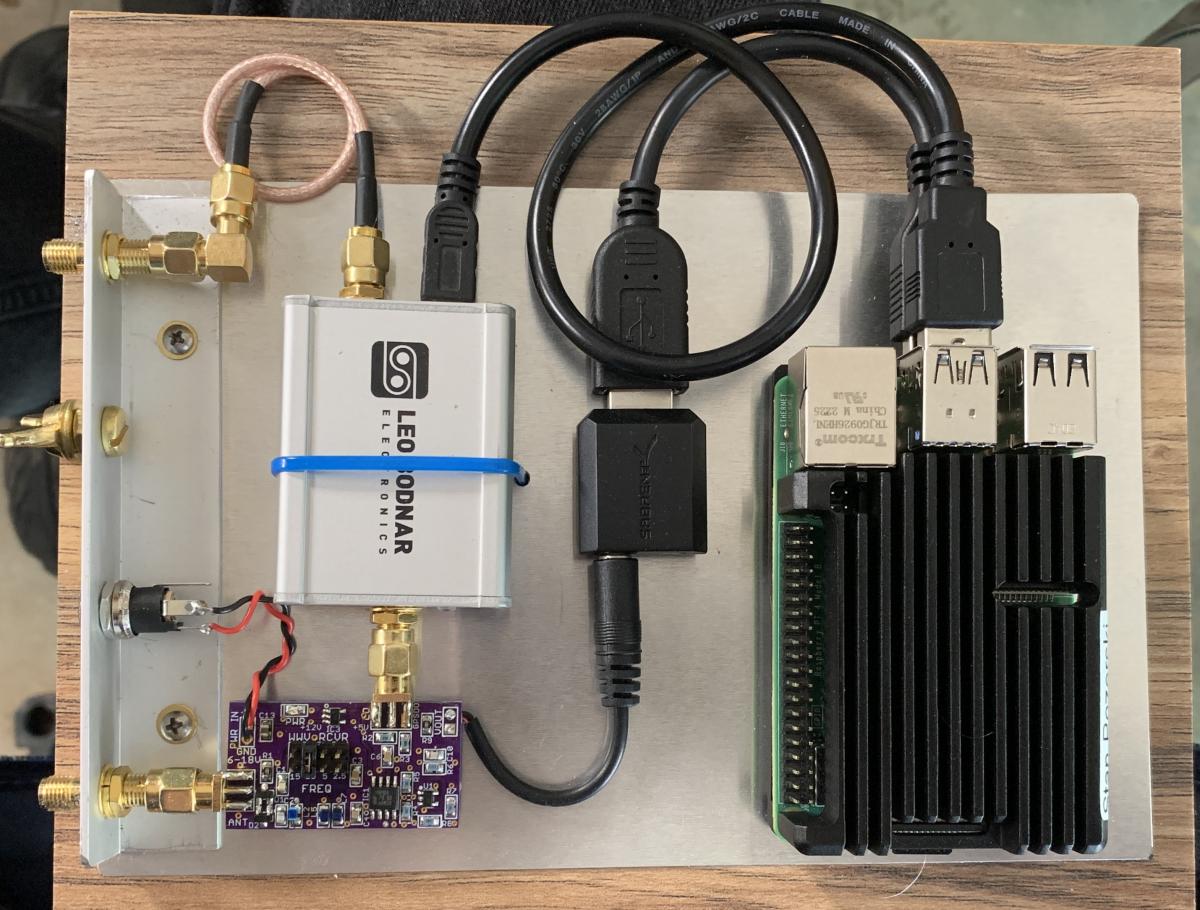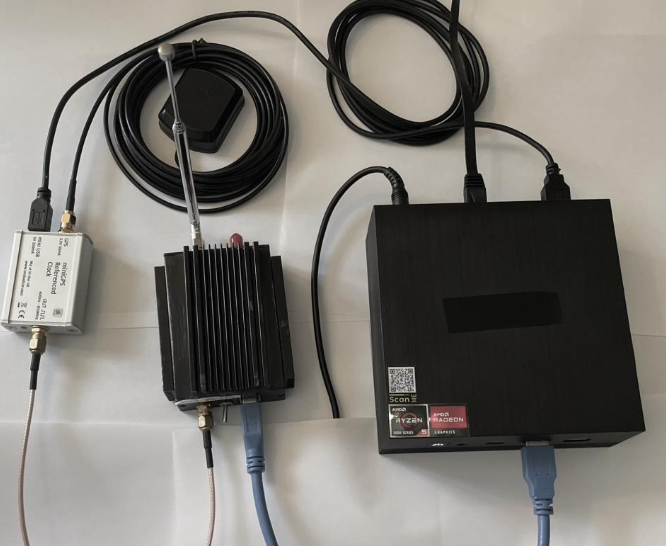Personal Space Weather Station (PSWS)
Overview
The Personal Space Weather Station project goal is the creation of a geographically distributed, multi-instrument system capable of making ground-based measurements of the space environment. The observations from this project will be useful to the owner of each system, but, more importantly, they will be aggregated into a central database for space science and space weather research purposes. The systems are designed to be relatively low cost (between 100 and 1000 US dollars), easily constructed and deployed by science professionals, educational institutions and citizen scientists. As of mid-2024, HamSCI members and their supporting institutions have designed and deployed numerous GRAPE* WWV Doppler Monitors, WSPR^ receivers and ground magnetometers. HamSCI and its partners are constantly at work on expanding the network, improving the PSWS data collection hardware and software, growing the network infrastructure for data storage and retrieval, as well as meeting HamSCI's ultimate goal, analysis of the collected data. This project is led by the The University of Scranton, in collaboration with the Tucson Amateur Packet Radio, Inc. (TAPR), Case Western Reserve University, the University of Alabama, the New Jersey Institute of Technology Center for Solar Terrestrial Research (NJIT-CSTR), and the Massachusetts Institute of Technology Haystack Observatory.
*GRAPE = Great Radio Amateur Propagation Experiment, GPS disciplined frequency measurements of standard time signal stations, such as WWV, WWVH and CHU
^WSPR = Weak Signal Propagation Reporter, a method of transmitting and receiving digital signals, uniquely suited to the study of radio wave propagation (wsjt.sourceforge.io)
Getting Involved
HamSCI welcomes involvement from anyone interested in space weather - the physical processes, daily variations and occasionally spectacular events which affect the Earth's ionosphere. HamSCI members consist of citizen scientists (ordinary folks volunteering their time, resources and knowledge towards HamSCI's primary missions of research, education and technology development), educators, university researchers, and professional space scientists - a broad spectrum of interests, educational experiences and practical backgrounds. HamSCI has a Get Involved page, listing resources such as Google Groups and regular telecons on various subjects.
HamSCI highly encourages all readers to explore the components of the PSWS. Consider building or sourcing one or more components, so that you may put your own Personal Space Weather Station 'on the air', receiving and contributing valuable data in the name of space physics research.
Note: HamSCI occasionally receives grant monies for deploying PSWS components at little or no cost to a volunteer willing to host the component(s) (such as a Grape receiver, ground magnetometer, or VLF receiving system) . Depending on which component is hosted, the host may be expected to erect a simple antenna, bury a magenetometer sensor, and, in all cases, provide an Internet connection. Requirements are spelled out, in some detail, on each PSWS component web page. Announcements regarding grant funded equipment are generally made via the main HamSCI Google Group. Questions are welcomed at HamSCI's general email address.
Components
The Personal Space Weather Station is a modular system, with each module being developed by a different team. Visit the links or see the photos below to learn about the modules. Some can be assembled and programmed in a home workshop, while others consist mainly of commercially available components. All require some degree of 'systems integration' to assure the components are connected/programmed properly, and sending data to aggregation servers via the Internet. HamSCI strives to provide information and instructions for all modules here on the website.
The most basic PSWS would consist of just a single module - such as one of the WWV Doppler Monitors or a Ground Magnetometer. More ambitious PSWS hosts may wish to install and operate multiple instruments, eg WWV Doppler Monitor + Ground Magnetometer, or, in the future, adding a VLF Receiving System.
- GRAPE 1 fldigi Single Channel WWV Doppler Monitor
- GRAPE 1 DRF Single Channel WWV Doppler Monitor
- GRAPE 2 Three Channel WWV Doppler Monitor
- WSPRDaemon GRAPE Full Spectrum Receiver System (Doppler Monitor and WSPR/FST4w Decoder)
- Ground Magnetometer Module
- VLF (Very Low Frequency) Observatory (hardware/software/web page under development - preliminary details at the link below )
 |
 |
 |
| GRAPE 1 - fldigi | GRAPE 1 - DRF | WSPRDaemon - GRAPE Full Spectrum Receiver |
 |
 |
| GRAPE 2 | Ground Magnetometer |
Research Questions
The PSWS project is motivated by questions from both from the science and amateur radio communities:
Science Questions
- How does the ionosphere respond to inputs from space and from the neutral atmosphere?
- How does the ionosphere couple with the neutral atmosphere and with space?
- What are the sources of medium and large scale traveling ionospheric disturbances?
- What are the causes of Sporadic E?
Amateur Radio Questions
- How do disturbances such as solar flares, geomagnetic storms, and traveling ionospheric disturbances affect radio wave propagation?
- How does ionospheric science help amateur radio operators improve communications?
- How can I make measurements in my own backyard that will help improve my amateur radio operations?
Further Information
Most terms and topics relevant to the PSWS can be explored via the Search Page here on the HamSCI website. (The search function can be a bit buggy - if you receive an error message, reload and try again.) A few suggested links:
- The science behind the GRAPE HF Receiver/Doppler monitor
- A comprehensive poster explaining how HF Doppler observations made with a network of low cost HamSCI Personal Space Weather Stations can be used to detect ionospheric phenomena
- What needed to host a GRAPE 1, 2, or WSPRDaemon - GRAPE Full Spectrum Receiver? (web page under development)
- WsprDaemon: A site dedicated to scientific applications of the WSPR (Weak Signal Propagation Reporter) and FST4W digital modes
- Commentary on the value of ground magnetometer networks and their application to space physics, AGU (American Geophysical Union) Earth and Space Sciences
- What is possible with a VLF Observatory? The W2NAF-KC3EEY VLF Observatory: Building Exciting New Developments from a Solid Foundation
- HamSCI Glossary

